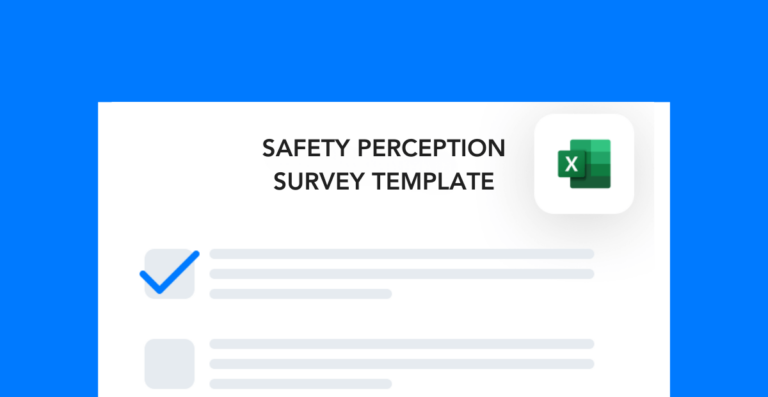The EHS Training Guide for Easier Compliance and Scalable Safety
Frontline Data Solutions: Safety Simplified
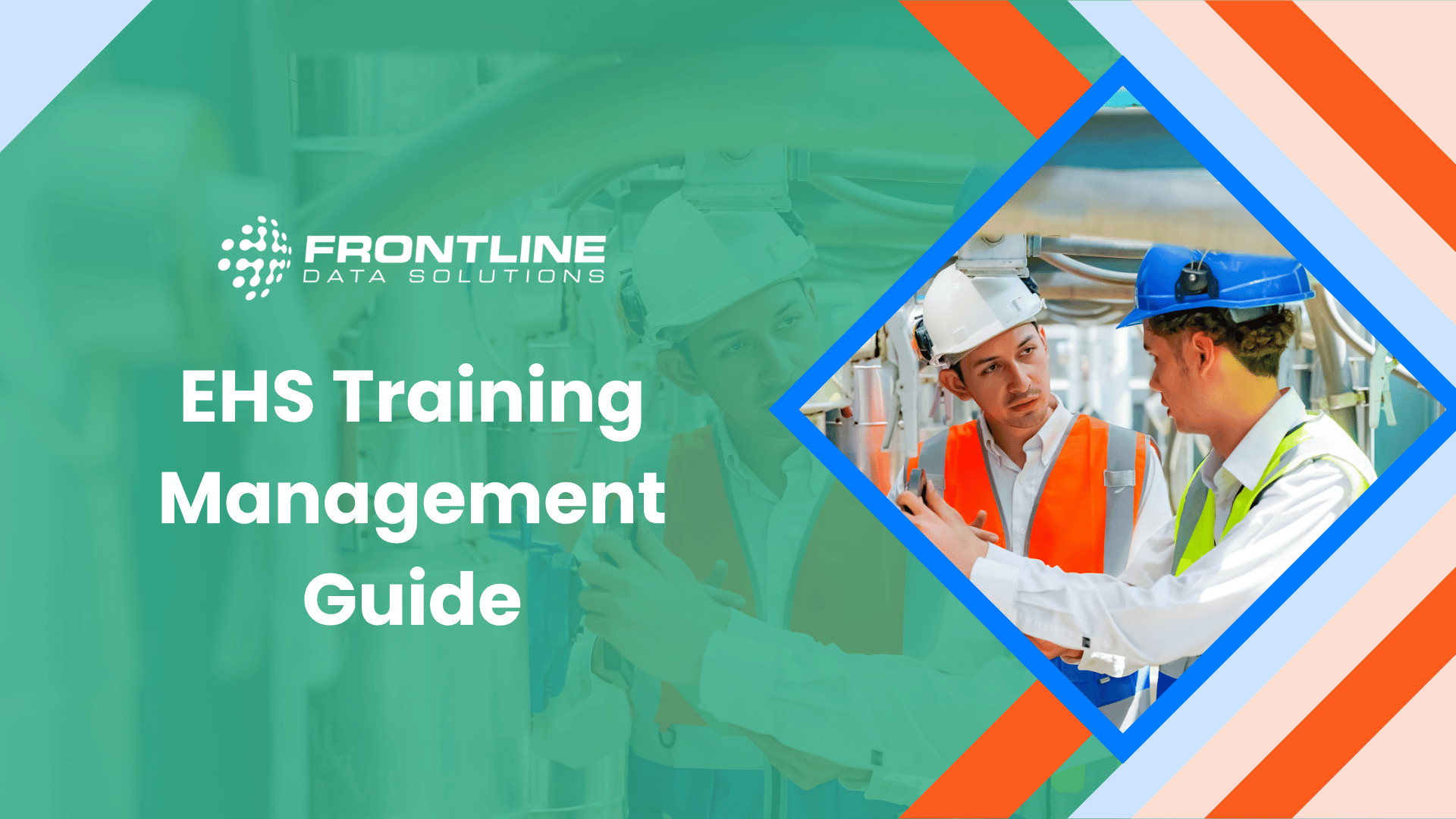
Keeping workers safe starts with effective training, but most companies find that EHS training is anything but simple. Ever-changing regulations, dispersed workforces, and limited administrative bandwidth make compliance feel like an uphill battle. And for those administering and tracking training manually, there’s a greater risk of missed renewals, overlooked audit findings, and preventable incidents.
Although EHS training can feel like a compliance exercise, it’s the backbone of a healthy safety culture. Well-trained employees are more engaged, more confident, and more consistent in following safe work practices. Companies that deliver and track training effectively see fewer incidents, lower insurance costs, and improved operational performance. The challenge lies in building a program that is both comprehensive and scalable.
That’s where technology changes the game. Modern learning management systems like Frontline LMS give EHS leaders the tools to automate training assignments, monitor compliance in real time, and create engaging, role-specific learning paths. By consolidating training management into one centralized platform, safety teams can save hours of administrative work, eliminate compliance gaps, and focus on what really matters: building a safer, stronger, and more resilient workforce.
Free EHS Training Audit Template to Get Started
Download our EHS Training Audit Template, which provides step-by-step guidance for auditing your training program. With it you, can find new opportunities to improve processes and achieve better training outcomes for compliance.
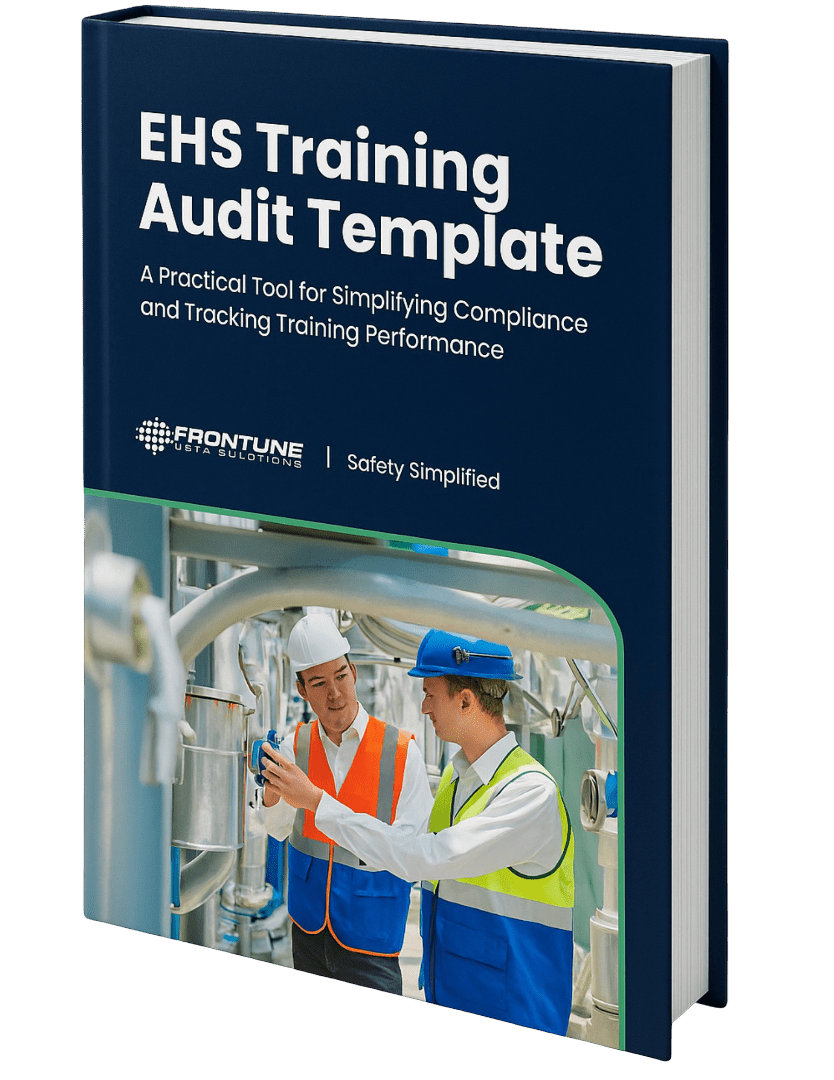
Chapter 1: What is EHS Training and Why Does It Matter?
Environmental, health, and safety (EHS) training is the foundation of every workplace safety program. The job of the EHS department is to make sure employees have the skills and knowledge they need to perform their roles safely according to both regulatory and internal standards. Whether it’s learning how to handle hazardous materials, respond to emergencies, or properly use personal protective equipment, training ensures that everyone knows how to prevent accidents before they happen.
But effective EHS training programs do more than meet training compliance requirements. They create an environment that encourages proactive safety. When workers understand the “why” behind rules, they’re more attuned to the hazards around them. They’re also more likely to report concerns and to get involved in prevention efforts. Long-term, health and safety training creates an active, engaged workforce.
This has a direct impact on the bottom line. According to OSHA, businesses spend nearly a billion dollars every week on workplace injuries. Yet, companies with strong safety training programs consistently report fewer incidents, less downtime, and lower insurance costs. Therefore, investing in training is a strategic decision that pays dividends in productivity, morale, and overall performance.
The Hidden Cost of Ineffective Training
Unfortunately, many safety programs struggle with outdated or inconsistent training practices. Using employee sign-in sheets, paper tests, and spreadsheets makes it difficult to prove compliance or identify gaps. When you have scattered or incomplete training records, you risk failing audits or repeating preventable incidents.
That’s why many EHS teams are moving toward digital learning management systems (LMS) like Frontline LMS, which centralize and automate every part of the training process. With Frontline, safety managers can assign courses based on job roles, automatically notify employees when certifications are expiring, and instantly access documentation during audits. The result is a consistent, scalable training program that simplifies compliance and builds lasting safety awareness.
Good EHS training empowers employees to make safe choices every day. When you support it with the right tools and structure, training becomes a driver of long-term success.
Chapter 2: Start by Meeting the Regulatory Requirements
EHS training is first and foremost a compliance requirement. Federal and state agencies require workers to know how to identify, control, and report workplace hazards. These training requirements are detailed, ongoing, and sometimes complex (depending on your industry). Here are just some of the major training requirements that you might have to meet.
OSHA Training Requirements
The Occupational Safety and Health Administration (OSHA) sets the foundation for most workplace safety training in the U.S. Under 29 CFR 1910, OSHA requires you to provide instruction on specific topics relevant to hazards like:
- Hazard Communication (1910.1200)
- Control of Hazardous Energy (1910.147)
- Personal Protective Equipment (1910.132)
- Emergency Action Plans (1910.38)
- Bloodborne Pathogens (1910.1030)
- Powered Industrial Trucks (1910.178)
- Process Safety Management (1910.119)
These standards also require refresher training at defined intervals or when job roles, equipment, or procedures change. For example, you must retrain forklift operators every three years or sooner (if an inspector observes an unsafe operation).
You also have to document all completed training and produce these records during inspections. Failure to provide verifiable proof of training is one of the most common OSHA citations.
EPA and Environmental EHS Training Requirements
The Environmental Protection Agency (EPA) enforces training requirements related to hazardous waste management, emergency response, and environmental compliance. The Resource Conservation and Recovery Act (RCRA) and Emergency Planning and Community Right-to-Know Act (EPCRA) require employee training on safe waste handling, reporting, and emergency coordination.
If you fall under these regulations, you must ensure that employees understand how to respond to spills or releases and how to prevent them. Your EHS training should cover both operational procedures and regulatory responsibilities, especially those managing hazardous materials.
Industry-Specific Regulations
Of course, certain industries have extra training requirements. Here are three examples:
- Oil & Gas and Chemicals: Workers in these industries must meet standards for process safety, confined space entry, and contractor orientation.
- Construction: OSHA’s 1926 standard requires training in fall protection, scaffolding, and electrical safety.
- Manufacturing and Utilities: Depending on the process, employees may need specific training on machine guarding, energy control, and ergonomics.
Regardless of industry, the only way to ensure compliance is to have a dedicated EHS training program. Without it, proving compliance is time-consuming and prone to errors and oversights.
The Challenge with Recordkeeping
Regulatory compliance doesn’t end when training sessions do. You must maintain records that include:
- Employees’ names
- Date of training
- Course subject
- Instructor name
- Verification of understanding
For large organizations or those with multiple sites, tracking this manually can quickly spiral out of control.
That’s why modern safety teams rely on Frontline LMS to simplify compliance. The platform automatically records completion data, stores certifications, and generates audit-ready reports with a few clicks. Automated notifications ensure that refresher training never lapses and that every employee remains current on required topics. That way, safety leaders can focus on ensuring training quality and engagement.
EHS training compliance doesn’t have to be overwhelming with the right systems in place. By understanding your regulatory requirements and leveraging digital tools to stay organized, you can maintain compliance effortlessly and focus on improving performance, not just meeting the bare minimum.
Chapter 3: Challenges of Traditional EHS Training Programs
Even with the best intentions, you can still struggle to deliver consistent, compliant, and effective EHS training. Traditional manual methods create administrative burdens, compliance risks, and disengaged learners. And while these systems may appear to work, they can actually make it harder to scale up safety programs.
Inconsistent EHS Training Across the Company
Fragmentation is common when companies grow. Individual sites or departments may track training differently, creating inconsistent records. This means auditors have a harder time discerning compliance. For companies with inconsistent data, there’s an increased risk of noncompliance and the fines that come with it.
Coordinating instructor-led sessions for multiple sites, shifts, or contractors is logistically challenging. Scheduling delays and inconsistent delivery make it harder to meet compliance deadlines and onboard new hires quickly.
Manual Recordkeeping and Administrative Overload
One of the most common struggles of EHS training is when you’re documenting it manually. A single lost sign-in sheet can create compliance gaps that put your business at risk. Poor records management practices make it hard to gain visibility to avoid those risks when compliance audits occur.
Low Employee Engagement and Retention
Another common problem is the unengaged workforce. Many employees see safety training as a box to check rather than something that impacts their daily work. Outdated or irrelevant sessions cause disengagement, reducing retention and the likelihood that lessons translate to safer behavior.
Free Template
Download this free template to conduct an employee safety perception survey and record the results.
Missed Renewals and Lapsed Certifications
Without automation, keeping up with refresher deadlines is difficult. Lapsed certifications lead to compliance risks and can halt operations when employees can’t perform certain tasks until retrained.
No Insight into Program Effectiveness
Manual systems rarely provide visibility into completion rates, test scores, or behavioral outcomes. Without analytics, safety teams can’t easily identify knowledge gaps or measure the impact of training courses.
The Cost of Staying Manual
These challenges translate into real risk. Missing records, expired certifications, and disengaged workers can all lead to incidents, fines, or downtime. EHS professionals spend countless hours maintaining spreadsheets instead of improving safety performance.
Traditional training methods may have worked in the past, but modern safety standards demand more. To protect workers and maintain compliance efficiently, EHS leaders need digital systems that grow with their operations instead of holding them back. By centralizing training management, systems like Frontline LMS allow teams to focus on proactive safety initiatives.
Chapter 4: What Effective EHS Training Programs Include
A successful EHS training program teaches workers how to identify hazards, prevent incidents, and continuously improve safety performance. Effective programs are structured, measurable, and adaptable to both operational needs and workforce diversity. Here are the core elements that safety training programs need for success.
Clear Learning Objectives and Role-Based Training
Every training activity should serve a defined purpose tied to specific job roles, risks, or compliance requirements. Instead of generic sessions, your employees should receive targeted instruction that’s relevant to their daily responsibilities. Supervisors and managers, for example, may need deeper knowledge of hazard analysis and corrective action tracking, while frontline workers focus on hazard recognition and safe work practices.
Blended Learning Methods
The best EHS programs use a mix of delivery methods (classroom instruction, eLearning, toolbox talks, and simulations) to reach all learning styles. Combining digital and in-person formats keeps training flexible and accessible, especially for sites with multiple sites or rotating shifts. Online learning also allows employees to complete modules on their own schedule without disrupting production.
Defined Refresher Intervals and Audit Readiness
Compliance requires ongoing training, not just one-time sessions. Refresher courses, retraining after incidents, or updates when procedures change should all be part of your program. Your documentation of these activities should be clear, current, and easily retrievable for audits. Structured training calendars and automated reminders are two signs of a solid EHS training program.
Consistent Documentation and Recordkeeping
Quality documentation is often a sign of compliance. A team that accurately tracks and organizes EHS training data demonstrates its commitment to worker safety. Whether it’s attendance records, completion dates, test scores, or instructor credentials, records should be consistent and thorough.
Continuous Improvement Through Data
An effective EHS training program evolves with your company. Regularly analyzing completion rates, feedback, and incident trends can help you decide where training works and where it needs reinforcement. Using data-driven insights, your EHS team can update content, focus on high-risk areas, and demonstrate measurable ROI to leadership.
The most effective EHS training programs are proactive, not reactive. With EHS software, companies can manage training, maintain compliance, and ensure their workforce is ready for the next challenge.
Chapter 5: How to Scale Training Across Locations
Managing EHS training becomes increasingly harder as companies grow. Multiple locations, rotating shifts, and diverse job roles create logistical hurdles that make consistency difficult to maintain. Scaling your training program effectively means ensuring every employee receives the same high-quality instruction and stays current on compliance requirements.
Standardizing Content Across Locations
If you have EHS training at multiple locations, there’s a higher likelihood of knowledge gaps that can cause safety incidents or noncompliance. Standardized training materials, policies, and procedures ensure that everyone follows the same best practices.
The best way to achieve this is to switch to a digital learning management system. This allows you to update and disseminate updated training materials in real time. That way, all sites use the same source of truth for training.
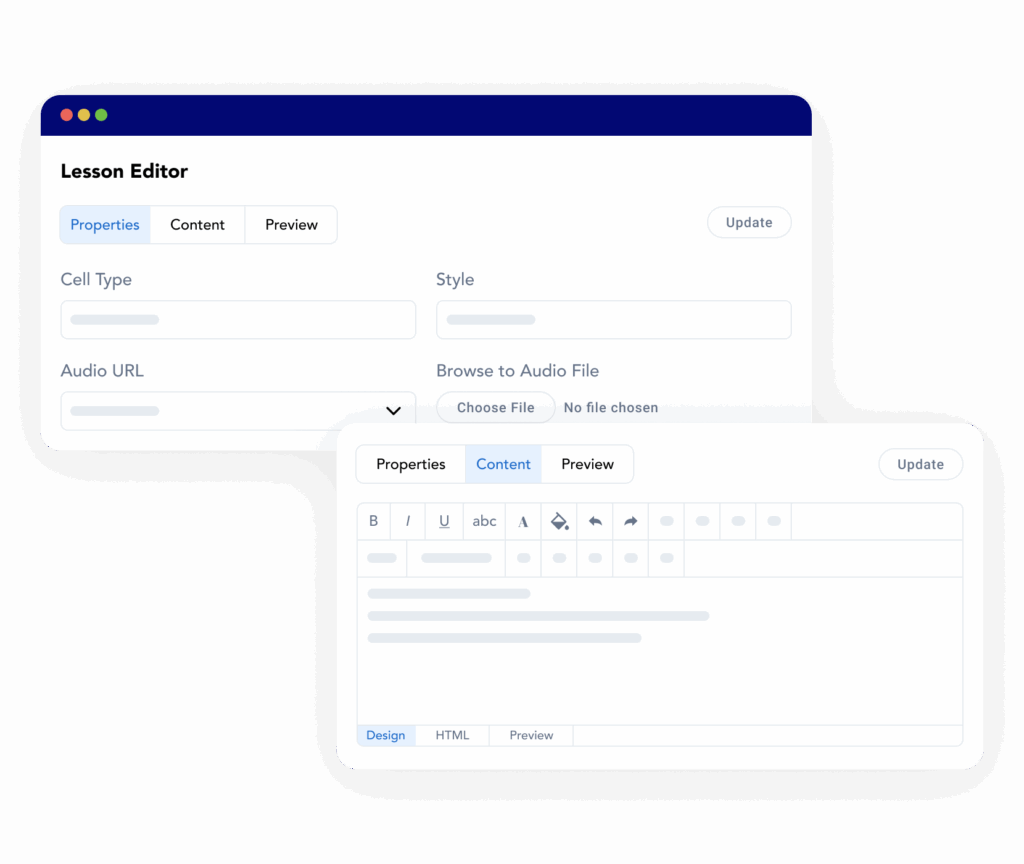
Flexible Scheduling and On-Demand Learning
Another way to scale training digitally is with on-demand training courses. E-learning makes training more accessible to your workforce. With it, workers don’t have to wait for a classroom session. Instead, you can assign course requirements for them to complete before coming onsite. This gives you greater flexibility and keeps your in-person sessions more efficient.
Role-Based Automation and Assignments
Manually assigning training by department or location is oftentimes inefficient and ineffective. Scalable programs use automation to ensure each employee receives the right courses for their role, certifications, and regulatory exposure. With Frontline LMS, you can automatically assign EHS training to entire job roles, ensuring those employees all receive the same assignments.
Mobile Accessibility for Frontline Workers
Safety training shouldn’t rely exclusively on computer access. Over time, you should work towards a program that allows workers to complete lessons, quizzes, and refreshers from mobile devices. This ensures that even remote crews and contractors stay compliant.
Centralized Oversight and Reporting
Scaling EHS training means maintaining visibility at every level. Digital dashboards allow safety leaders to monitor completion rates, expired certifications, and outstanding assignments across all sites. Automated reports provide instant access to training records for audits or leadership reviews, eliminating the need for manual data collection.
A scalable EHS training program depends on automation, flexibility, and centralized visibility, which is why so many teams eventually turn towards digital solutions. By standardizing content, simplifying scheduling, and enabling mobile access, your team can maintain consistent compliance and safety performance at every location, shift, and job level.
Chapter 6: How Frontline LMS Simplifies EHS Training
Once you establish your EHS training program and scale it across your business, the next challenge is continuously improving it. Many companies struggle to track performance, prove ROI, or ensure consistency across departments. With the right technology, however, these challenges disappear. That’s where Frontline LMS comes in.
Automating the Entire Training Lifecycle
Frontline LMS takes EHS training from a manual administrative task into an automated, streamlined process. From onboarding and refresher assignments to compliance tracking and reporting, the system manages every step automatically.
Admins can assign training based on job role or department, while automated reminders ensure no one misses a deadline This automation saves safety teams hours of work each week and drastically reduces the risk of human error.
Centralized Training Management
Frontline LMS makes EHS training accessible anywhere, anytime. All courses, records, and certifications live in one secure, centralized system. EHS managers can easily update content, assign courses, and view completion progress in real time. Whether you’re managing one facility or fifty, Frontline LMS gives you a single source of truth for your entire safety training program.
Data-Driven Insights and Reporting
Effective EHS training is about results, not just participation. Frontline LMS provides dashboards and analytics that reveal the status of training assignments across your organization. This allows you to figure out which departments, locations, or individuals are falling behind. That way, you can deploy your resources to the areas that need the most attention.
Flexible Learning Tools
Modern safety programs need flexibility. Frontline LMS supports EHS training management for e-learning and instructor-led sessions, so you can keep track of everything. With the Frontline EHS mobile app, frontline workers can complete their assigned courses straight from their phones or tablets. This makes learning more convenient for workers and easier for managers to conduct if there are limited resources for in-person options.
Audit-Ready Compliance and Documentation
Documentation is at the heart of compliance, and Frontline LMS makes it effortless. The system automatically records completion data, generates certificates, and stores proof of training for each employee.
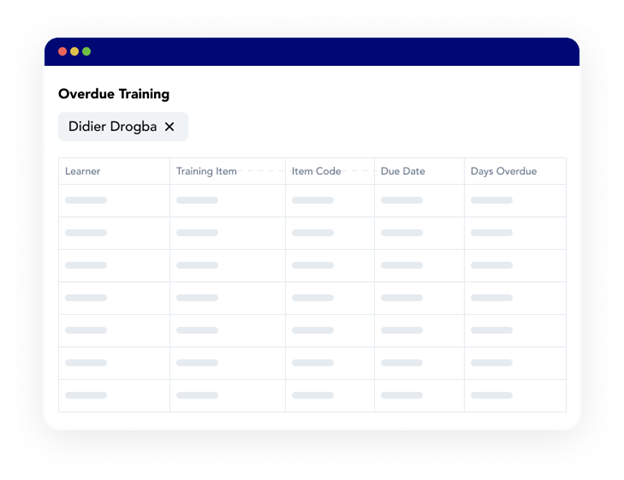
Once users have received training assignments, they have to complete them for the task to go away. This is another reason why digital EHS training is better for accuracy and overall compliance.
When it’s time for an audit, you can instantly retrieve records by employee, department, or course. This eliminates the stress of manually pulling training history from spreadsheets, or worse, paper employee sign-in sheets. You also don’t have the same risk of inaccurate data.
Measuring ROI and Continuous Improvement
Frontline LMS gives EHS leaders the ability to connect training performance directly to safety outcomes. By correlating incident trends, compliance rates, and productivity metrics, you can measure the true value of your training investment. These insights allow you to refine content, adjust schedules, and target specific risks for greater impact over time.
The Real-World Impact of Digital EHS Training
Companies using Frontline LMS report measurable improvements in compliance efficiency and workforce engagement. Brazil Guerrero, a training manager at chemical manufacturer AmSty has seen that “on-time training completions have improved, and site leaders have taken an interest in their site’s performance” since implementing Frontline LMS.
The system combines automation and analytics to help safety leaders simplify compliance, improve accountability, and create a lasting culture of safety. With the right system in place, your EHS training program becomes a competitive advantage.
Chapter 7: Implementation Checklist and Next Steps
Building an effective EHS training program is only the beginning. Executing it consistently is what turns compliance into long-term safety performance. Whether you’re starting from scratch or upgrading from a manual system, success depends on setting up the right structure, processes, and technology from day one.
EHS Training Implementation Checklist
Step 1: Define Goals and Compliance Requirements
Clarify what you want your training program to achieve. Identify your key compliance drivers (OSHA, EPA, ISO, client requirements) and outline measurable goals such as completion rates, reduction in incidents, or audit readiness.
Step 2: Map Training to Roles and Risks
List all job functions and the specific training requirements tied to each. Use this to create a competency matrix that guides automated course assignments later.
Step 3: Audit Existing Training Materials
Evaluate what content you already have (slides, toolbox talks, procedures, etc.) and determine which pieces need updating, converting to digital, or replacing.
Step 4: Set Up Automated Workflows
Leverage digital systems like Frontline LMS to automate assignments, reminders, and refresher scheduling. This ensures consistency and drastically cuts down on administrative efforts.
Step 5: Train the Trainers
Make sure supervisors and EHS coordinators know how to use the LMS, assign courses, and pull reports. A brief onboarding session can prevent confusion and maintain program integrity.
Step 6: Launch in Phases
If your company has multiple sites, roll out training in stages. Start with one facility, refine your workflows, and expand once the process runs smoothly.
Step 7: Track Progress and Gather Feedback
Monitor completion rates and learner feedback early on. Use these insights to adjust course content, improve engagement, and reinforce accountability.
Step 8: Demonstrate Results to Leadership
Regularly report metrics such as training completion, audit readiness, and incident reduction. These data points show ROI and help secure continued support for your program.
Your Next Step Toward Smarter, Simpler Training
EHS training doesn’t have to be a constant cycle of spreadsheets, reminders, and audits. With Frontline LMS, you can centralize documentation, completion tracking, compliance metircs, and more while empowering employees to take ownership of their safety.
Frontline is built for teams that want clarity and control, not complexity. From automated recordkeeping to audit-ready reporting, it’s everything EHS managers need to train smarter, scale faster, and stay compliant.
Ready to simplify your training program? Book a demo to see Frontline LMS in action or get a free quote by using our software pricing calculator.
Want to Simplify Training & Onboarding?
Book a personalized demo with our team to learn how Frontline LMS software can drastically improve your current approach to employee learning management.


